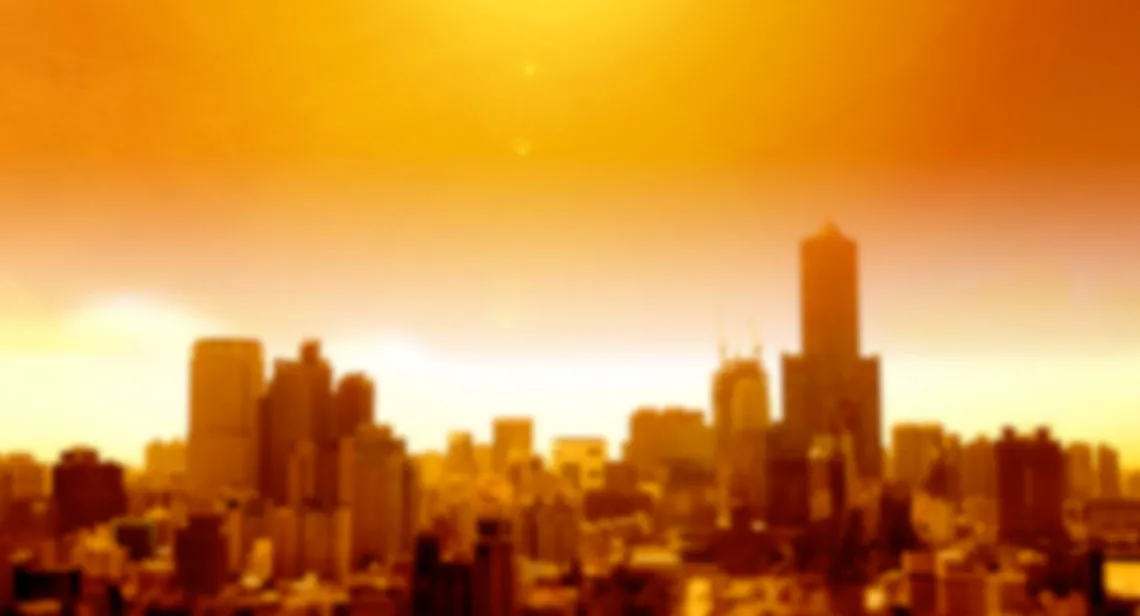How Cities are Battling Extreme Heat, and Why Record-Breaking Temps Don't Tell the Whole Story

In many ways, Phoenix has become exhibit A for extreme heat, especially in the Southwest.
The city set a record on July 18, reaching 19 consecutive days with high temperatures above 110 degrees Fahrenheit, according to the National Weather Service. The count continued to rise – Phoenix has now entered its third week of temperatures above 110.
But Phoenix is far from the only city dealing with the effects of this year's extreme heat, said Ladd Keith, an assistant professor of planning and sustainable built environments the College of Architecture, Planning and Landscape Architecture.

Ladd Keith, Associate Professor of Planning and Sustainable Built Environments.
Keith, who studies how cities' policies can mitigate and manage extreme heat, warns against emphasizing Phoenix as "the sole place that heat is impacting." He said cities around the world – as well as smaller towns and rural communities – are battling increasing temperatures. He points to the globe's four "heat domes," or weather systems that trap heat for extended periods, currently scorching areas in North America, Europe and Asia.
"A lot of things we're seeing with the heat wave in the Southwest are being mirrored in places across the world, and we're seeing a lot of similar temperature records being broken and impacts outside the United States," said Keith, who is also a faculty research associate at the university's Udall Center for Studies in Public Policy.
Keith is the lead UArizona researcher on a $25 million project, funded by the U.S. Department of Energy, to study the impact of climate change on Arizona's urban areas. The project, called the Southwest Urban Corridor Integrated Field Laboratory, also includes researchers from Arizona State University and Northern Arizona University.
Keith has become a familiar face and name in the news during the summer months and has recently been quoted in the Associated Press, BBC News and The Hill. He also contributed to a new guide for journalists on how to cover heat waves and climate change. The guide was published by the Global Heat Health Information Network, a United Nations-led forum of scientists and policymakers working to help the public better understand the risks and health effects of extreme heat.
Keith talked to University of Arizona News about what makes this year's heat wave different, how government agencies have begun prioritizing heat mitigation and management efforts, and why record-breaking temperatures alone are an incomplete benchmark for understanding extreme heat.
Increasing temperatures aren't a new phenomenon, especially in the Southwest. But this year feels different, considering that the World Meteorological Organization predicted in May that the world would set temperature records, and now much of it has. Is it really different this year?
Yes, it's due to the gradual increases from climate change over time, but also the El Niño (climate pattern) is really amplifying some of those temperatures this summer into record-breaking territory. That's a normal pattern in the climate system associated with warmer waters in the eastern Pacific Ocean and is associated with higher temperatures in the Southwest.
Like you said, this has been predicted not only through climate science for decades that these types of events would happen, but also the forecasts for the year from the National Oceanic and Atmospheric Administration were very accurate as far as the outlooks for increased temperatures this summer. So, this is not surprising, but certainly concerning.
You're a contributing author on a new media guide for covering extreme heat and its effects. What are some of the highlights?
We put this guide together because there is so much more media attention to heat this year than in past years. We really want to make sure, as much as possible, that heat is being reported in a scientifically backed way and that the risks are being framed correctly.
Some of the key considerations in this report are: To frame heat in the context of climate change and to attribute some of these record-breaking temperatures appropriately to climate change; to highlight both actions and solutions – not just focus on the negative but also the positive things going on and how cities and people can react to the heat; to acknowledge that some people are more vulnerable to heat risk; and to give attention to the indirect health impacts of heat, such as the fact that it can alter human behavior, increase transmission of certain diseases and affect health care delivery.
You're part of a $25 million project, funded by the U.S. Department of Energy, to study the impact of climate change on Arizona's urban areas. Has the current heat wave emphasized the importance of that project?
The current heat wave highlights the need for actionable climate change science, like the kind that the Southwest Urban Corridor Integrated Field Laboratory will provide, and it's provided more opportunities for us to engage with stakeholders across the state. Our original plans to do modeling and fieldwork, and to work with partners on developing resilient solutions, remain the same, but there's more awareness around this issue, and that's been a positive development.
A study you're leading as part of that project explores how city plans and policies influence urban heat across Arizona's large population centers. What are some things cities can do that we already know work well for heat mitigation?
As part of the Plan Integration for Resilience Scorecard for Heat, we're looking at plans that cities have adopted and the policies that potentially impact the urban heat island effect, where urban areas are hotter than the surrounding rural areas. What we've found is, consistent with other research, there's a lot of focus on urban greening strategies for reducing heat, but cities are also producing a lot of waste-heat reduction strategies without acknowledging the connection to urban heat. Anything related to increasing walkability, transit or bicycle access – which helps reduce wasted heat from vehicle engines – or making buildings more energy efficient is a really big opportunity for cities to highlight the less commonly thought of heat mitigation benefits of those efforts.
What's your outlook on how government agencies are beginning to prioritize extreme heat similar to other hazards, such as tornados, floods and earthquakes?
There's been positive movement from federal, state and city governments toward creating a better heat governance system across the country, but I think we still have such a long way to go compared to what the actual hazard is and the direction that heat-related deaths are trending.
As an example, Maricopa County's Department of Public Health released its heat death report for 2022 just last month, which found that there were 425 heat-associated deaths last year, a 25% increase over 2021. This was the eighth straight year of increases in deaths, and over half of those were unhoused people. So, we need to put a lot more resources into protecting the most vulnerable in our communities.
Is there one thing that you wish the average person could better understand about extreme heat as we live through it right now and will inevitably live through it again, summer after summer?
The record-breaking temperatures that we see across the world are certainly shocking, but chronic heat risk is also very detrimental to human health and impacts our urban systems.
The danger is that we overly focus on those record-breaking temperatures. If next year is still abnormally hot compared to the last 30 years but isn't breaking as many temperature records as this year, does that mean we focus less attention on it? That concerns me quite a bit. Attention should not be attached just to the temperature records that we're breaking. Tracking heat-related illnesses and deaths and looking at those health outcomes is equally important as watching the temperatures rise.
Learn more about Assistant Professor of Planning and Sustainable Built Environments Ladd Keith, or support faculty research to continue the important work of CAPLA faculty.



